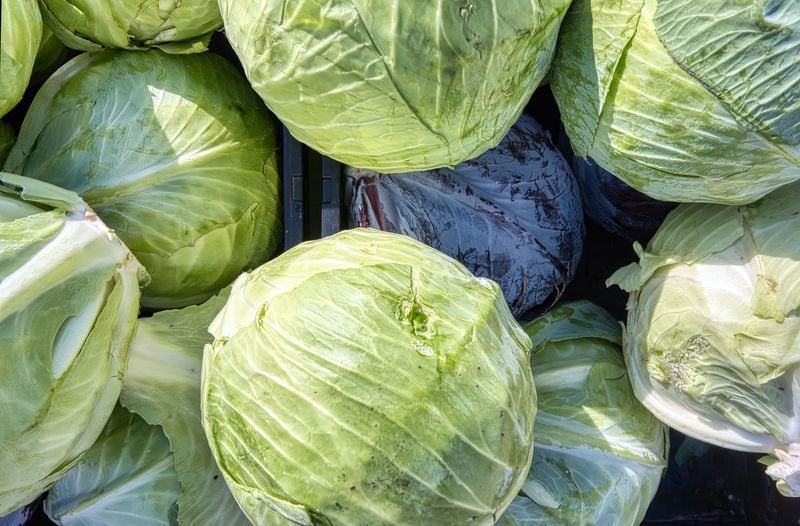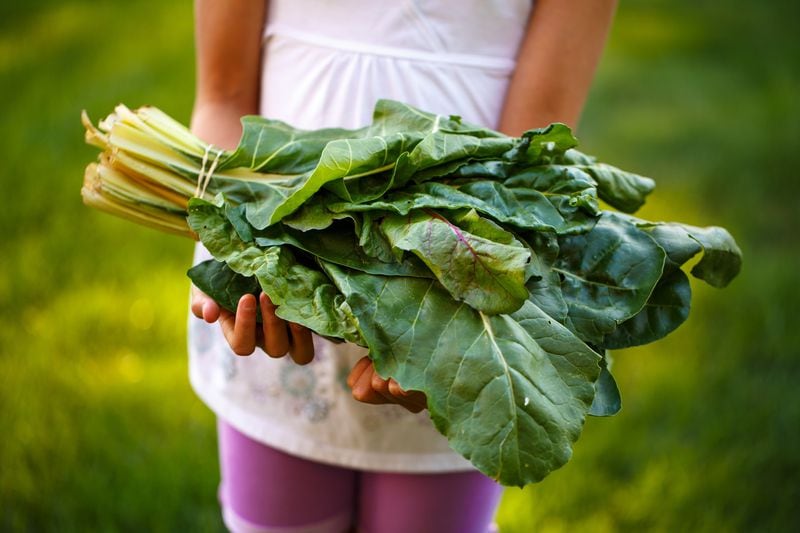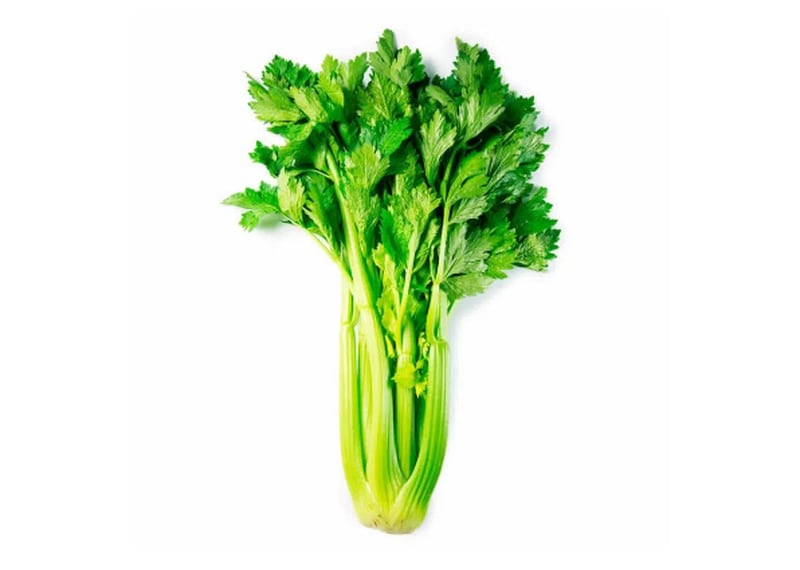No need to take refuge only in potatoes, rice and pasta until the arrival of spring. Despite the cold, the garden can still provide us with a good quantity of vegetables to take to the table.
artichokes
They appear as soon as it starts to get cold and they practically accompany us until spring. However, it is during the first months of their season that we find them in their best version: tender and compact. Especially if the so-called American variety is preferred, smaller and with tight leaves, but very very tasty.

As a general rule, we eat the artichokes cooked, cold and leaf by leaf, spread with mayonnaise, lemonade or vinaigrette, always leaving the heart for the end. And they are very good as well, but beware they can also be used in cooking, as in the recipe below.
Artichokes with ham (for 4 people)
—12 small artichokes
—250 grams of Serrano ham
—4 garlic cloves
—1 cup dry white wine
—Salt, pepper, lemon juice, olive oil and parsley
First of all, you must remove the toughest outer leaves of the artichokes, in addition to cutting the top of each one and placing them in a container with cold water and lemon juice, in order to prevent that they don’t darken. Then drain them and cook them in a saucepan with cold water and salt, covered, for half an hour or until tender. At this point, take them out of the water, cut them into quarters and put them in a colander to drain.
Meanwhile, cut the ham into squares of two centimeters and crush the four cloves of garlic then chop them as finely as possible. Immediately heat a non-stick pan and brown the ham and garlic. Stir for a few minutes so that the ham releases its fat and the garlic takes on its taste. Just then, and always before the garlic burns, add a generous drizzle of olive oil. Stir and add the artichokes plus a little pepper. Leave to stand for a few minutes then add the white wine, mix well and boil once.
Finally, remove from the heat, add some chopped parsley and adjust the salt if necessary. Serve immediately with bread to accompany.
Brussels
Brussels sprouts are synonymous with winter. But unfortunately, they also have unpleasant aromas, or at least that’s how many remember them from childhood. It is the fault of our parents or grandparents, but also of the customs of thirty or more years ago, when vegetables were boiled until they were tender and tasteless.

Now things are different and we have the privilege of eating everything al dente. In the case of brussels, it is even recommended to cook them in a pan and not in a pot with water. How? Look at the following recipe.
Brussels with truffled balsamic reduction (for 4 people)
—400 grams of brussels
—Salt, pepper, olive oil and balsamic reduction
Washed and dried, cut the Brussels sprouts in half and put them in a large pan with olive oil. Season with salt and pepper and cook over medium heat until browned on both sides. After that, put them in a bowl and season with a good amount of truffled balsamic reduction. Serve immediately.
Katankura truffled balsamic vinegar reduction 250 ml

Cabbage
Green or purple, cabbage is the staple raw vegetable in the kitchen during the fall and winter months. Green is cooler and a little sweeter than purple, a bit more sting resistant and has a slightly more concentrated flavor. Both can be prepared in a raw salad, just like lettuce, but they can also be cooked to be eaten hot in a salad, for example with bacon. It is also traditionally used in pork and legume stews. And of course, it is one of the main ingredients of the very popular salad today. Coleslaw.

salad Coleslaw (for 4 people)
—¼ purple cabbage, cut into thin strips
—¼ green cabbage, cut into thin strips
—4 grated carrots
—2 green apples, peeled and cut into very thin sticks
—1 cup of mayonnaise
—¼ cup mustard with seeds
—Salt, pepper, marigold oil and lemon juice
Place the cabbage, carrots and apples in a large bowl. Add mayonnaise and mustard, along with salt and pepper to taste. Also add a little oil and mix. If necessary, add more oil and at the end give it a lemon twist. Stir once more, leave to stand for ten minutes and serve.
Maille Old Fashioned Mustard 210 g

Fennel
Another key and very versatile vegetable of these months is fennel, as it can be used in its entirety for different preparations. With its delicate “hairs” that it has on the tip, we can dress sauces and salads, and those who dare to make savory preserves or pickled gherkins can give it a very good aniseed touch. But its stems are also used, and finely chopped they can be part of a raw winter salad, while its bulbs are a delight in any baked recipe, such as the preparation that follows.

Chicken with fennel (for 4 people)
—8 short tutorials
—2 whole fennels
—1 lemon
—Salt, pepper and olive oil
In a large bowl, put the chicken tutos and the quartered fennel bulbs. Season with salt and pepper to taste, plus a little grated lemon zest and a few finely chopped fennel hairs. Stir and leave for half an hour. Next, arrange the tutos (leather side up) in a previously oiled oven source and place the fennel bulbs between them. Bathe everything with the liquid that remains in the bowl and cook over medium heat (200º) for 40 minutes or until the chicken is tender and golden. Serve immediately.
chard
Although it can be found at fairs and supermarkets throughout the year, it is during these cold months that Swiss chard is best used in our kitchens. It can be used for tortillas, fried foods, purees, and even as part of stews with meat and vegetables. Its leaves can also be passed for a few minutes in boiling water and then eaten with a little salt, olive oil and lemon. And your rods? They are ideal for making traditional and artisanal faux pejerreyes.

Fake money (for 4 people)
—15 to 20 stalks Swiss chard (the biggest you can get) —2 eggs
-1 cup of flour
-Salt and pepper
-Miracle oil
Very clean and wire free, boil the stalks in a pot with water and a little salt. Once they are a bit tender, take them out, put them in cold water with ice (to stop the cooking) then leave them in a colander so that they can drain all the water . Meanwhile, beat the two eggs in a large bowl then add the flour. Continue beating vigorously until there are no more lumps. Then take the dried stalks and soak them in the smoothie for about fifteen minutes.
When you remove them from the bowl, it is convenient to shake them so that they throw off the excess batter, and then fry them very carefully in abundant hot oil. Once golden and crisp, pass on absorbent paper to remove the excess oil then serve with a few drops of lemon on top, accompanied by a little tartar sauce to spread.
Buka Tartar Sauce Cucumber Tartar 220g

Celery
An old joke was that a turkey, plucked and inside a dish in the oven door, said, “So far we’re fine.” Meanwhile, the story ended, “old women chopped celery.” To understand it, you have to go back to Chile 40 or 50 years ago, where one of the few fresh salads that could be eaten during the winter was precisely celery. First, it was chopped and seasoned with oil, salt and lemon. Over the years the thing will evolve towards our traditional celery-avocado, which we present to you here.

Celery-avocado salad (for 4 people)
—5 cups peeled and chopped celery
—2 radishes
—2 lawyers
—Salt, olive oil and lemon juice.
Hydrate the chopped celery and radishes -clean and thinly sliced- for two hours in a bowl with cold water and lemon juice. Then drain all the liquid and transfer the contents to a dry bowl. Add the diced avocados and season with salt and olive oil to taste. At the end, add more lemon juice. Stir and serve.
potato celery
If the celery comes from the cold months, then obviously the so-called celery potato is too. They are not the same plant, but they are quite similar on the outside, that is, above ground. Because down below is where the potato or celeriac grows, in other countries known as celeriac. It is a spherical root, a little hard and which, after cleaning and peeling, offers a firm meat but intense in flavor.

Something tastes like celery, but also has hints of mustard which also brings it closer to turnip. Wherever you look, a delight. How to prepare it? Here is a suggestion.
Potato salad with celery (for 2 people)
—1 celery potato
—1 hard-boiled egg
—¼ bunch finely chopped cilantro
—Salt, pepper, coriander, olive oil and lemon juice
Peel the celery potato then cut it into very thin sticks, put them together in a bowl with cold water and a little lemon juice. Then drain the canes and transfer them to a dry bowl. Add the grated hard-boiled egg, in addition to the coriander. Season to taste with salt, pepper, olive oil and lemon, then serve.
beans
Although they can be found frozen all year round in supermarkets, these months they abound fresh in fairs, markets and even in certain corners of the city. They are generally sold shelled, ready to cook and then eat. If they don’t prefer them peeled, it will take a lot of work to find them in their pod.

The beans can be eaten cold in salads or stews (with pulmay for example) and even mashed. For the same reason, it’s worth having them on hand all those months.
And the tomatoes?
It’s true, in markets, fairs and supermarkets you can find tomatoes all year round. However, between the months of May and October, more or less, it is practically impossible to find good quality. So, the recommendation is to switch to cherry tomatoes, which come in different varieties and can help us add joy and color to our winter salads.
Cherry tomato Agrícola Ramos 500g

pickled onions
Although onions are not necessarily from these months, which is the cold season, it is customary to have them on hand in pickles, to accompany vegetable stews, casseroles and more. It is very easy to prepare them at home, and thus avoid buying very poor quality ones such as those sometimes found in fairs and markets.
The trick is simple: peeled and cross-cut onions are placed in an airtight glass container, then immersed in quality red wine vinegar. It is left tightly closed in a dark, dry place and after a fortnight they are ready.
Vinegar Casta cabernet sauvignon 500 ml

*Prices for products in this item are updated as of June 29, 2022. Values and availability may change.
Source: Latercera
I’m Todderic Kirkman, a journalist and author for athletistic. I specialize in covering all news related to sports, ranging from basketball to football and everything in between. With over 10 years of experience in the industry, I have become an invaluable asset to my team. My ambition is to bring the most up-to-date information on sports topics around the world.


